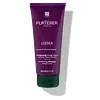What's inside
What's inside
 Key Ingredients
Key Ingredients

 Benefits
Benefits

 Concerns
Concerns

 Ingredients Side-by-side
Ingredients Side-by-side

Water
Skin ConditioningAloe Barbadensis Leaf Extract
EmollientCoco-Glucoside
CleansingSodium Coco-Sulfate
CleansingGlycerin
HumectantLauryl Glucoside
CleansingSodium Chloride
MaskingLavandula Angustifolia Oil
MaskingMelaleuca Alternifolia Leaf Oil
AntioxidantMagnolia Officinalis Bark Extract
AntimicrobialAscorbyl Palmitate
AntioxidantBeta-Sitosterol
Emulsion StabilisingCoco-Caprylate
EmollientSqualene
EmollientXanthan Gum
EmulsifyingGlyceryl Oleate
EmollientHydrogenated Palm Glycerides Citrate
EmollientLecithin
EmollientLysolecithin
EmulsifyingPolyglyceryl-4 Caprate
EmulsifyingTocopherol
AntioxidantParfum
MaskingWater, Aloe Barbadensis Leaf Extract, Coco-Glucoside, Sodium Coco-Sulfate, Glycerin, Lauryl Glucoside, Sodium Chloride, Lavandula Angustifolia Oil, Melaleuca Alternifolia Leaf Oil, Magnolia Officinalis Bark Extract, Ascorbyl Palmitate, Beta-Sitosterol, Coco-Caprylate, Squalene, Xanthan Gum, Glyceryl Oleate, Hydrogenated Palm Glycerides Citrate, Lecithin, Lysolecithin, Polyglyceryl-4 Caprate, Tocopherol, Parfum
Water
Skin ConditioningSodium Lauroyl Methyl Isethionate
CleansingSodium Lauroyl Sarcosinate
CleansingLauryl Betaine
CleansingGlycol Palmitate
EmulsifyingPEG-7 Glyceryl Cocoate
EmulsifyingDimethicone
EmollientAcrylates Copolymer
Decyl Glucoside
CleansingSodium Methyl Isethionate
EmulsifyingBeeswax
Emulsion StabilisingBHT
AntioxidantCeteareth-60 Myristyl Glycol
EmulsifyingCitric Acid
BufferingCitronellol
PerfumingDisodium EDTA
Parfum
MaskingGuar Hydroxypropyltrimonium Chloride
Skin ConditioningHexyl Cinnamal
PerfumingLaureth-7
EmulsifyingLauric Acid
CleansingLimonene
PerfumingLinalool
PerfumingMethylisothiazolinone
PreservativePersea Gratissima Oil
Skin ConditioningPhenoxyethanol
PreservativePhysalis Alkekengi Fruit Extract
Skin ConditioningPolyquaternium-74
Skin ConditioningPropylene Glycol
HumectantPrunus Amygdalus Dulcis Oil
Skin ConditioningSodium Benzoate
MaskingSodium Chloride
MaskingSodium Hydroxide
BufferingTetrasodium EDTA
Water, Sodium Lauroyl Methyl Isethionate, Sodium Lauroyl Sarcosinate, Lauryl Betaine, Glycol Palmitate, PEG-7 Glyceryl Cocoate, Dimethicone, Acrylates Copolymer, Decyl Glucoside, Sodium Methyl Isethionate, Beeswax, BHT, Ceteareth-60 Myristyl Glycol, Citric Acid, Citronellol, Disodium EDTA, Parfum, Guar Hydroxypropyltrimonium Chloride, Hexyl Cinnamal, Laureth-7, Lauric Acid, Limonene, Linalool, Methylisothiazolinone, Persea Gratissima Oil, Phenoxyethanol, Physalis Alkekengi Fruit Extract, Polyquaternium-74, Propylene Glycol, Prunus Amygdalus Dulcis Oil, Sodium Benzoate, Sodium Chloride, Sodium Hydroxide, Tetrasodium EDTA
Ingredients Explained
These ingredients are found in both products.
Ingredients higher up in an ingredient list are typically present in a larger amount.
Parfum is a catch-all term for an ingredient or more that is used to give a scent to products.
Also called "fragrance", this ingredient can be a blend of hundreds of chemicals or plant oils. This means every product with "fragrance" or "parfum" in the ingredients list is a different mixture.
For instance, Habanolide is a proprietary trade name for a specific aroma chemical. When used as a fragrance ingredient in cosmetics, most aroma chemicals fall under the broad labeling category of “FRAGRANCE” or “PARFUM” according to EU and US regulations.
The term 'parfum' or 'fragrance' is not regulated in many countries. In many cases, it is up to the brand to define this term.
For instance, many brands choose to label themselves as "fragrance-free" because they are not using synthetic fragrances. However, their products may still contain ingredients such as essential oils that are considered a fragrance by INCI standards.
One example is Calendula flower extract. Calendula is an essential oil that still imparts a scent or 'fragrance'.
Depending on the blend, the ingredients in the mixture can cause allergies and sensitivities on the skin. Some ingredients that are known EU allergens include linalool and citronellol.
Parfum can also be used to mask or cover an unpleasant scent.
The bottom line is: not all fragrances/parfum/ingredients are created equally. If you are worried about fragrances, we recommend taking a closer look at an ingredient. And of course, we always recommend speaking with a professional.
Learn more about ParfumChances are, you eat sodium chloride every day. Sodium Chloride is also known as table salt.
This ingredient has many purposes in skincare: thickener, emulsifier, and exfoliator.
You'll most likely find this ingredient in cleansers where it is used to create a gel-like texture. As an emulsifier, it also prevents ingredients from separating.
There is much debate on whether this ingredient is comedogenic. The short answer - comedogenic ratings don't tell the whole story. Learn more about comegodenic ratings here.
The concensus about this ingredient causing acne seems to be divided. Research is needed to understand if this ingredient does cause acne.
Scrubs may use salt as the primary exfoliating ingredient.
Learn more about Sodium ChlorideWater. It's the most common cosmetic ingredient of all. You'll usually see it at the top of ingredient lists, meaning that it makes up the largest part of the product.
So why is it so popular? Water most often acts as a solvent - this means that it helps dissolve other ingredients into the formulation.
You'll also recognize water as that liquid we all need to stay alive. If you see this, drink a glass of water. Stay hydrated!
Learn more about Water